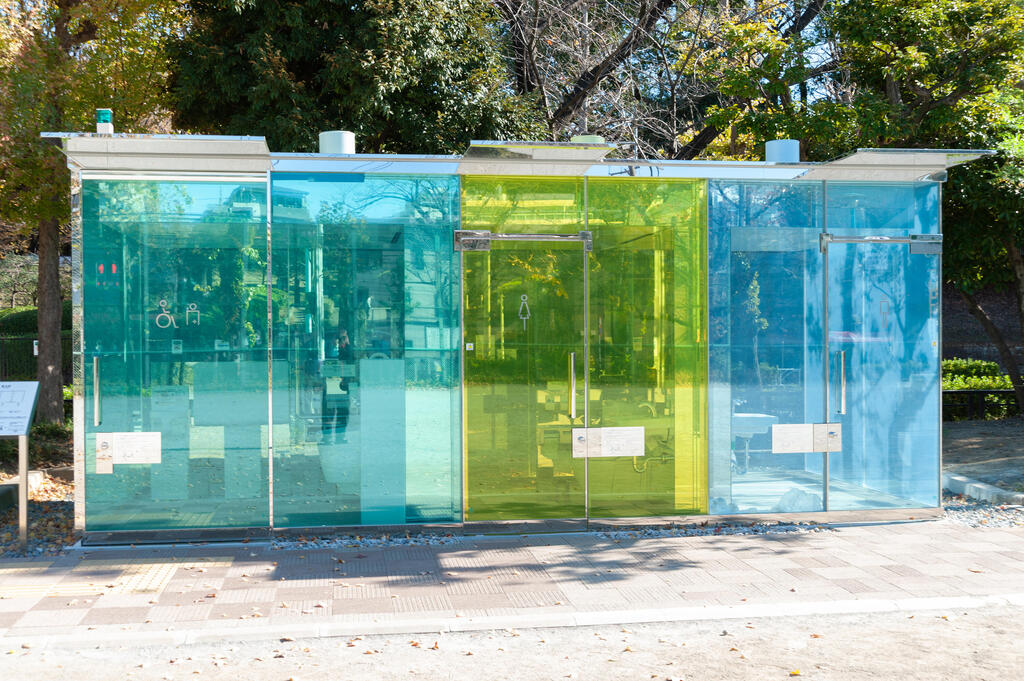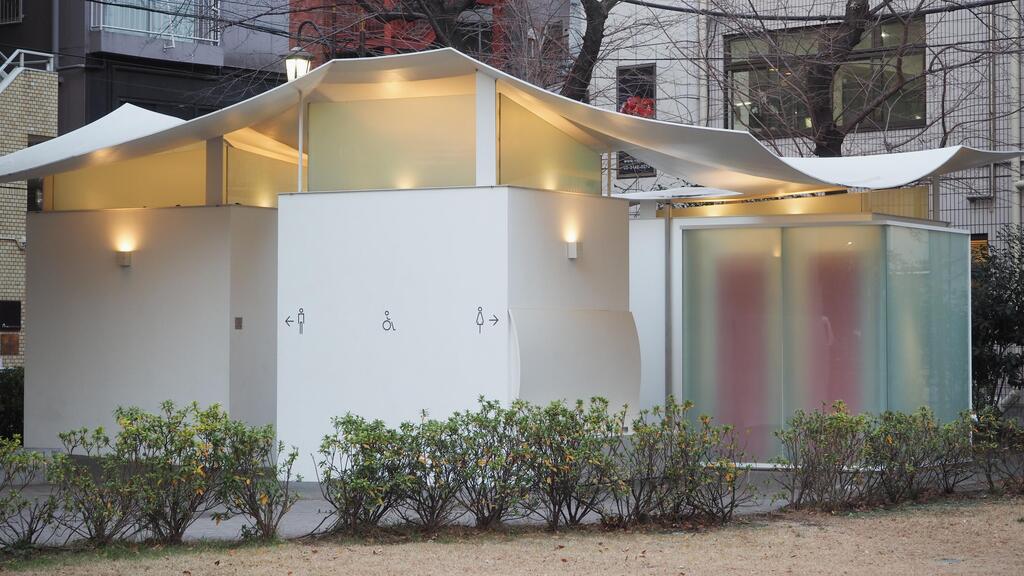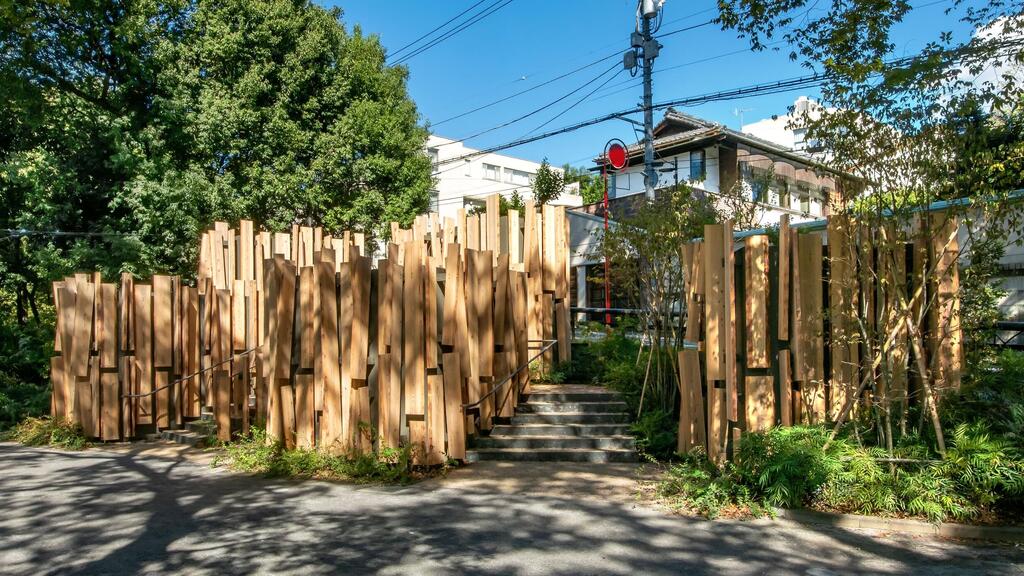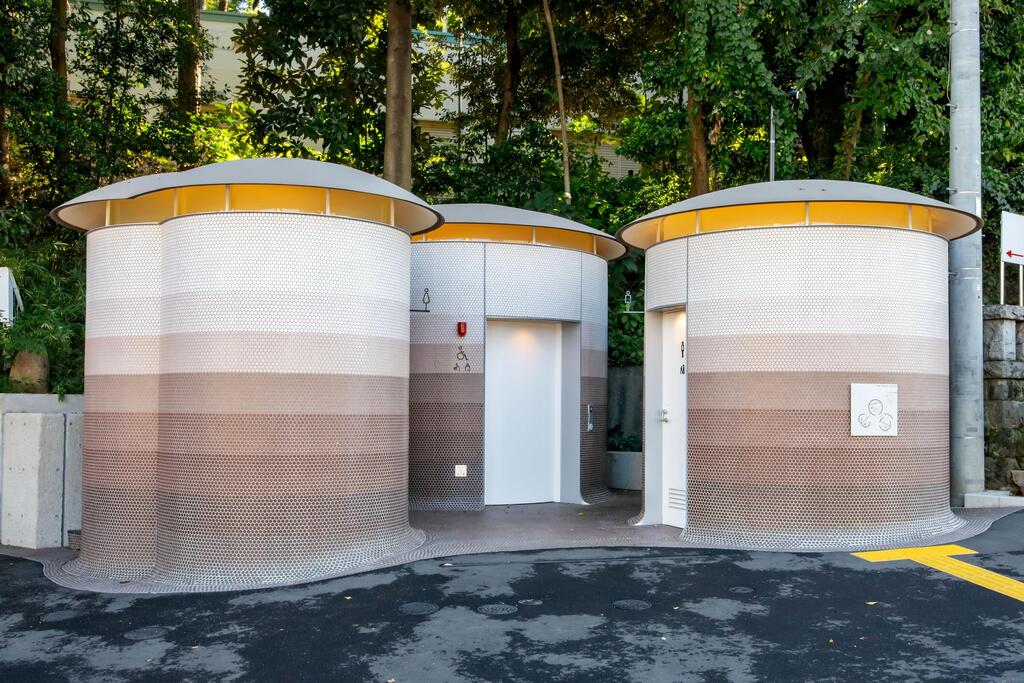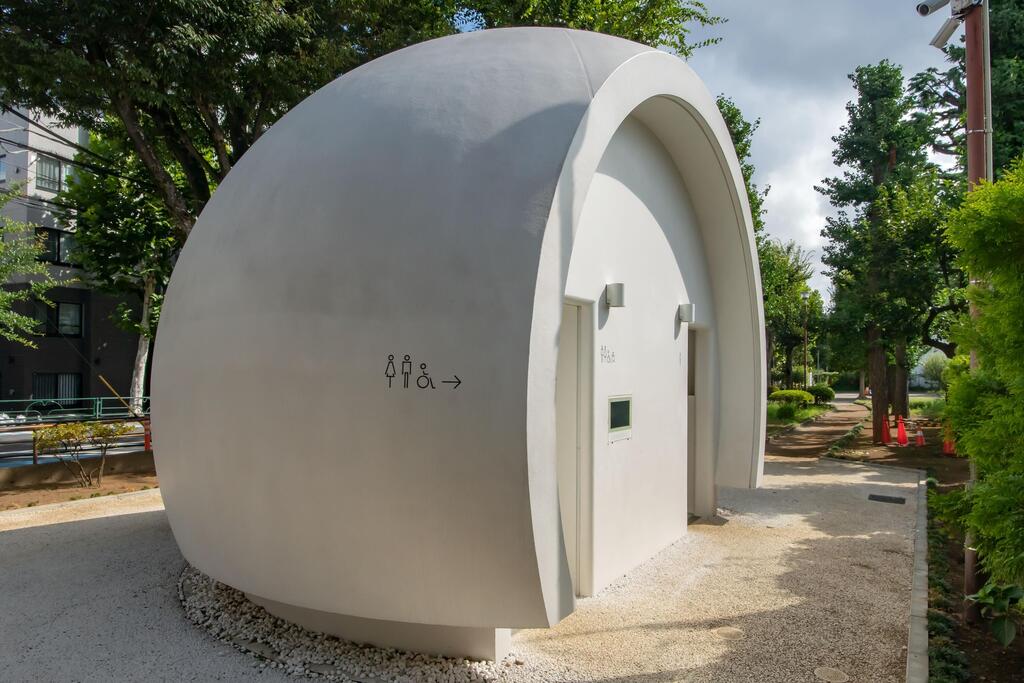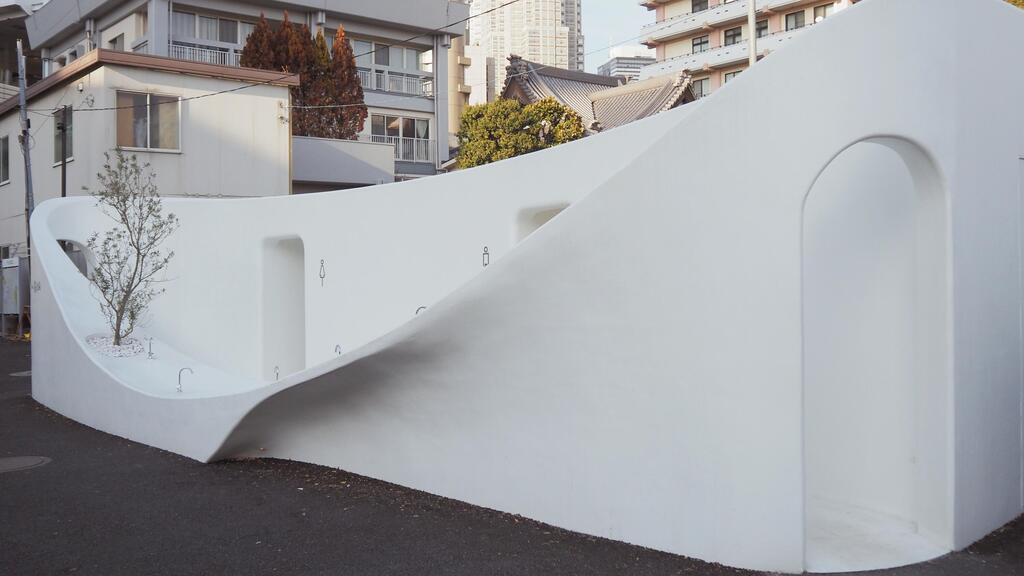Japan is known for being one of the cleanest countries in the world. However, Japanese people themselves rarely use public toilets due to stereotypes that consider them dirty, smelly, and even scary. A new project called The Tokyo Toilet aims to change Japanese perceptions about using public restrooms in public spaces, and it does so, as befits the Japanese, in the most impressive and beautiful way possible.
The Tokyo Toilet brings together about 17 public restroom facilities in the famous Shibuya district, designed over the past three years by important Japanese architects and designers, most of whom are winners of the Pritzker Architecture Prize.
As expected from the high profile of the designers, including Tadao Ando, Kengo Kuma, and Shigeru Ban - some of the greatest Japanese architects of recent decades - these are exceptional creations that have already become a pilgrimage site for design enthusiasts from around the world.
The transparent ones
One of the standout public restrooms is the one designed by architect Shigeru Ban: toilet cubicles made of smart, colorful glass with varying opacity. When the toilets are vacant, the glass is completely transparent, allowing anyone approaching to check if they’re in use, and as soon as you enter and lock the door, the facades automatically turn milky and completely opaque, ensuring privacy.
This is a relatively new technology mainly used in office buildings. "There are two things we’re concerned about when entering public restrooms, especially those located in a park," Ban said at the project's launch, "the first is cleanliness and the second is whether someone’s inside."
The octopus toilets
In the center of a public garden in a neighborhood called Octopus Playground, a public restroom facility was built with a white roof designed to resemble an octopus’s arms in a geometric interpretation.
The structure includes four small toilet cubicles made of white walls and frosted glass, one for men, one for women, and accessible toilet, and an additional toilet cubicle intended for everyone that even contains a laundry facility.
Behind the project is veteran architect and Pritzker Prize winner Fumihiko Maki, who has designed numerous projects worldwide throughout his career. "The restrooms are located in a popular neighborhood park that serves as a playground for children and is filled with greenery," Maki said. "We wanted the facility to function not only as public restrooms but also as a public space equipped with seating and rest areas."
A journey among the trees
A structure entirely clad in wooden panels marks the special project of Japanese architect Kengo Kuma. Located in a small park in central Shibuya, the structure is covered with wooden panels of various sizes that almost completely conceal the restroom spaces.
Kuma decided to break the facility into five small cabins connected by stepped paths, aptly naming the project “A Walk in the Woods." The design aims to have the restroom buildings blend seamlessly with the park's lush trees and vegetation, intended to "change the conventional image of public toilets,” according to Kuma.
House-shaped toilets
Passersby might mistake these public toilets for a private house with a tiled roof. This was precisely the intention of Japanese fashion designer and renowned DJ Nigo – to design public restrooms that look like a house from the outside.
"In contrast to the ever-changing city with its high-rise buildings, I envisioned a restroom that feels like an old, quiet house standing in the corner of the neighborhood," Nigo explained. "For some, the structure may evoke nostalgia, while for others, it may appear new, depending on their age and generation."
The mushroom trio
Among several buildings are three restroom cubicles designed to resemble mushrooms growing in the area. These structures replaced old, neglected restrooms at the entrance to a small neighborhood shrine in Shibuya.
The new restroom structure consists of three cylindrical cubicles clad in small, monochromatic hexagonal tiles. The project was designed by Pritzker Prize-winning Japanese architect Toyo Ito, who aimed to create a calm and welcoming facility that encourages people to use the restrooms.
"I hope the restrooms will increase the sense of security among women, so they can use them at night," Ito said. "My intention was to design restrooms that don’t stand out too much and can be used comfortably."
Touch-free semicircular design
In a small public garden in the heart of Shibuya’s financial district stands a semicircular white restroom structure, four meters high, named Hi Toilet. Besides its unique shape, its idea was to create a touch-free restroom experience using voice commands to allow for maximum hygiene.
Kazoo Sato, the project's creative director, developed the concept following in-depth research on public restroom user behavior, noting their aversion to touching surfaces. "After three years of research, we developed the voice-activated toilet concept," Sato explained. “The COVID-19 pandemic accelerated the adoption of this technology.”
Fountain-like
The latest addition to the Tokyo Toilet project is a block designed by renowned architect Sou Fujimoto. It is located not far from Shibuya’s hotel district, and its shape resembles a fountain with organic lines and white cladding that includes a shared area for washing hands.
"Public restrooms can be likened to a watering hole in the city, like a spring," Fujimoto said. "Besides serving as restrooms, I wanted to offer a handwashing spot in the public space."


